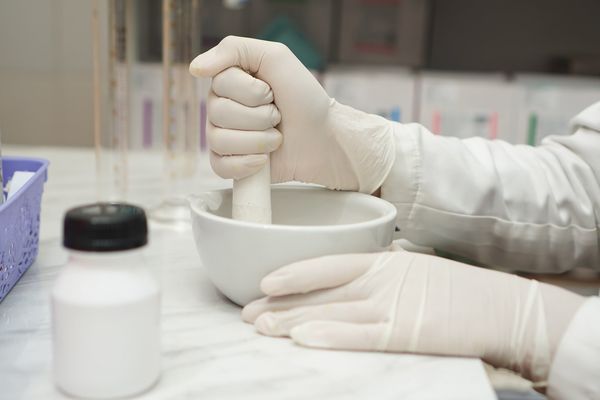Progesterone is a hormone in the body that stimulates and regulates various functions. It's produced in the adrenal gland, the ovaries and the placenta (if you’re pregnant). It helps prepare your body for pregnancy and conception, regulates your menstrual cycle and affects your libido. If you don't have enough progesterone, you may have difficulty getting or staying pregnant.
Progesterone levels
Progesterone levels fluctuate throughout your menstrual cycle. Your numbers rise each month during the second half of the menstrual cycle, about seven days before your period. That's because one of progesterone’s most important functions is to cause the uterine lining to give off special proteins to prepare it for an implanted fertilized egg. If the lining isn't thick enough, implantation won't happen.
If you don't have an implantation, your estrogen and progesterone levels drop. That triggers your uterine lining to break down, and you get your period, which sheds the lining.
Read: The Female Reproductive Cycle >>
If you do have an implantation and get pregnant, progesterone is produced in the placenta and the levels remain high during pregnancy. Levels are even higher if you're having more than one baby.
The combination of high estrogen and progesterone levels stops ovulation during pregnancy. Progesterone also causes your milk-producing glands in the breast to grow during pregnancy, which is what allows your breasts to make milk for nursing.
“Normal” progesterone levels depend on a person's age and gender. For women and people assigned female at birth, factors include where you are in your menstrual cycle and whether you’re pregnant.
Low progesterone causes
Low progesterone levels may be caused by:
- Possible miscarriage
- Ovulation or ovary problems
- Menopause
Low progesterone symptoms
If you’re not pregnant, some symptoms of low progesterone include:
- Low libido
- Hot flashes
- Migraine or headache attack
- Depression, anxiety or other mood changes
- Menstrual cycle irregularity or absence
If you're pregnant, you need progesterone to maintain your uterus until you give birth. If your levels are too low, you may not be able to carry the baby to term.
Some symptoms of low progesterone levels in pregnant women include:
- Spotting
- Abdominal pain
- Frequent low blood sugar
- Regularly tender breasts
- Constant fatigue
- Vaginal dryness
Progesterone and estrogen hormones complement one another. So, when you don't have enough progesterone, estrogen dominates. And that can lead to symptoms such as:
- Depression, mood swings or low libido
- Weight gain
- Heavy bleeding
- Irregular menstrual cycle
- Premenstrual syndrome
- Breast tenderness
A simple blood test — a PGSN, or progesterone test — can help you find out if your progesterone levels are too low. It can help you figure out why you’re having trouble getting pregnant, confirm whether you’ve ovulated, monitor hormone therapy (formerly called hormone replacement therapy) and assess the status of a high-risk pregnancy.
Read: Clinically Speaking: What You Need to Know About Hormone Therapy >>
Treatment for low progesterone
Several types of treatments can help address low progesterone symptoms. If you're trying to conceive, hormone therapy can help increase progesterone and thicken your uterine lining. That may improve your chances of getting pregnant. If you have severe menopause symptoms, your hormone therapy will likely be a combination of progesterone and estrogen.
Natural remedies to boost low progesterone levels include:
- Eating more foods with zinc, such as shellfish, whole grains and nuts
- Upping your intake of vitamins B and C, which help maintain progesterone levels
- Regulating stress levels (cortisol is released when you're very stressed, reducing progesterone levels)







